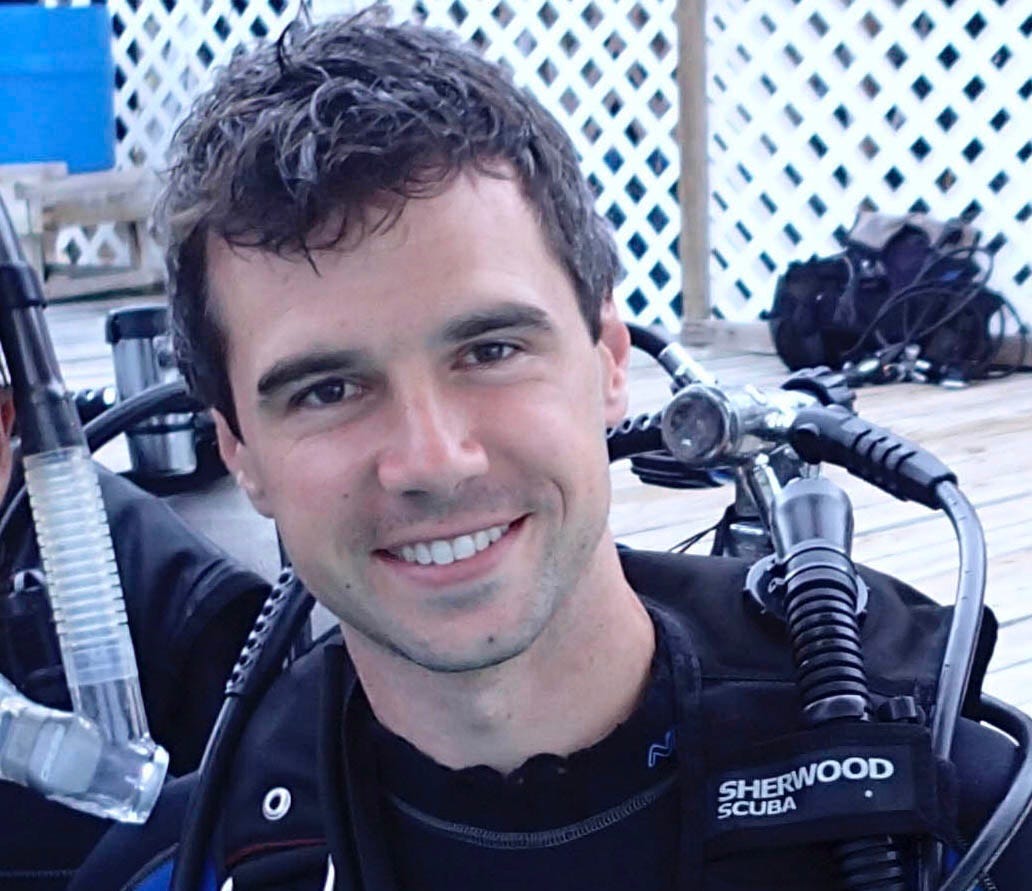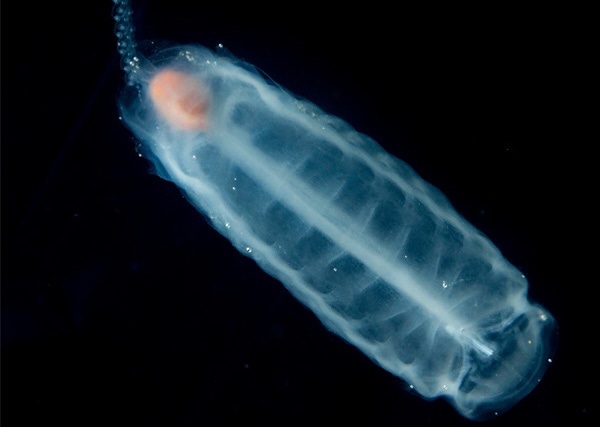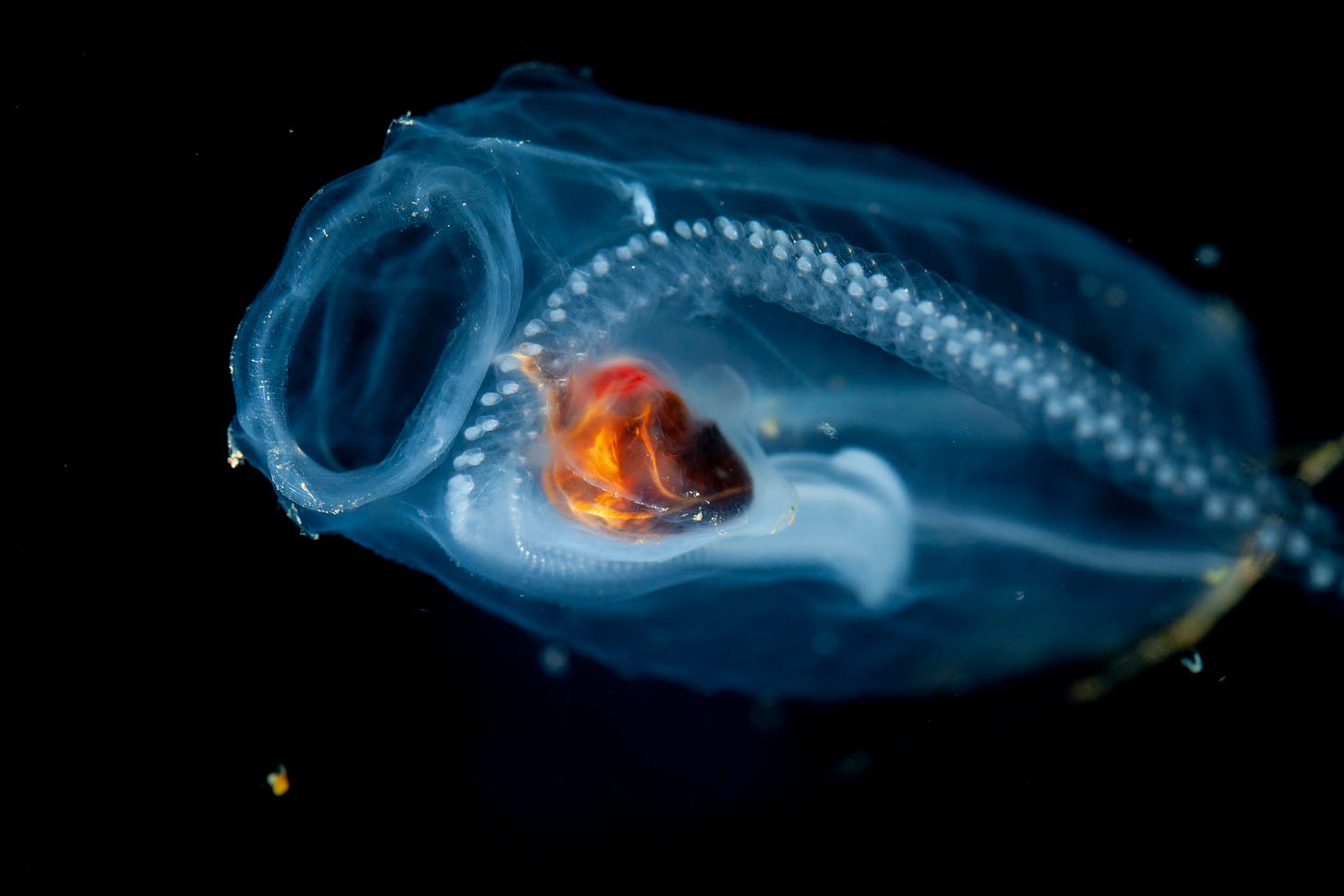It’s not every morning that you get an email about your favourite planktic tunicate so you can imagine how excited I was to get an email from Bill Wellock with Florida State University. As New Zealand’s premier salp enthusiast I was thrilled to get the latest research on the best gelatinous bodies on Earth.
And now, thanks to the power of email, I can share it with you!
Florida State University Associate Professor Michael Stukel is as pumped about salps as I am and he outlined the very new, very exciting research into floating lub-lubs slash flooty flubs.
FSU Associate Professor Michael Stukel.
I cannot tell you how excited I was to get your email at 4.47am. New salp research is my jam. I think people think I’m being sarcastic when I say I love salps but I genuinely do. Do you love them too?
Of course I love salps! In fact, I love all of the pelagic tunicates - salps, doliolids, pyrosomes, and appendicularians. Each of these organisms is fascinating in its own right, but my favorites are the salps - which of course you know about - and appendicularians, which are related organisms that look and act entirely differently. Appendicularians look like microscopic tadpoles, but build mucous "houses" that look like snot bubbles, through which they filter water to catch their food.
That is truly inspiring.
Okay, don’t keep us all in suspense, tell us about this new research.
We now have have more insight into a strange sea creature found in oceans around the world and what their presence means for the health of a marine ecosystem.
Scientists had thought that salps — small marine organisms that look like clear, gelatinous blobs — competed for resources with krill. Krill are shrimp-like creatures that are an important food source for many marine animals. But new research published in Limnology and Oceanography suggests that salps are actually competing for food with an organism known as a protist.
Does this mean salps are even better than we thought they were?
As a scientist, I try not to ascribe value judgments to organisms - even ones that I love. Our research does suggest, however, that an increase in salps would not be detrimental to fish and other higher organisms that humans care about, while it would also increase the ocean's ability to absorb carbon dioxide.
It might look like a masturbator but it’s actually a wonderful salp.
How did you even find this out?
To understand what size prey the salps were eating, the researchers built a circular tank and filled it with salps and seawater, which contained their prey. They measured the fluorescence glowing from the salps’ prey living in the water and tracked how it changed over time to understand what size prey were being eaten.
Because the protists are the same size as their prey, they needed to use a different method to see what size prey they were eating. The researchers filled one bottle with seawater, which held a typical amount of protists and prey, and another with diluted seawater, which decreased the frequency with which predator and prey met. After 24 hours, they could use the same fluorescence measuring technique to see what kind of prey the protists ate.
Are you surprised that we are still finding out incredible things about salps? Do you think the next thing we will found out is that they can talk?
I am not at all surprised that we are still finding out new things about them. Salps are amazing organisms and their strange life cycles where they alternate generations of solitary and chain-forming individuals, leads to difficult-to-predict boom-bust cycles. This makes it difficult for scientists to target experiments to work with them. I don't think we will find that they can talk in the sense that human's think of talking, but I would not be surprised if we discover that they have a rudimentary form of communication.
Do we still need protists? What actually are they?
Protists are single-celled eukaryotes, that means that they have a nucleus, unlike bacteria. All higher organisms, all animals, plants, and fungi, are evolved from primitive protists. Today protists are everywhere - in all ocean and land environments, and even inside us. If you want to picture the types of protists that we discuss in our paper, you can think of organisms like little tiny amoebas. These protists play important roles in recycling production in the ocean.
Glorious.
This research was funded by New Zealand organisations too right? Can you tell me about that?
Researchers from the National Institute of Water and Atmospheric Research in New Zealand, Scripps Institution of Oceanography at the University of California San Diego, and the University of Hawaii at Manoa were co-authors on this paper. This research was supported by the National Science Foundation, by New Zealand’s Ministry for Business, Innovation and Employment, by the National Institute of Water and Atmospheric Research, and by the Royal Society of New Zealand.
Are there salps everywhere in the world?
Salps are found in oceans around the world.
Will salps eventually ever get the kudos they deserve for being amazing little creatures?
I hope so!
Also, I always ask this but - are salps sentient?
I don't think that salps are sentient in the way that humans think of sentience. They have primitive nervous systems that certainly do not allow the type of complex thought that we find in dolphins, chimpanzees, and octopi. However, they can sense and react to their environment.
Thank you for taking the time to talk salps with me.
And thanks for reading. Salps are great and I hope reading this made you think they’re great too.







Are we just not going to mention that the Prof is kind, smart and hot? Also my kink is hearing someone talking super passionately about something super niche.
He said octopi ❤️